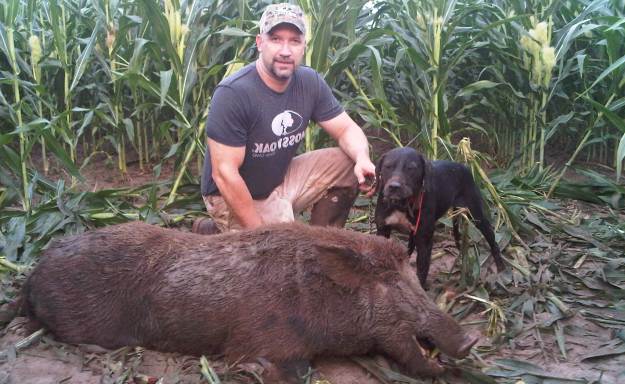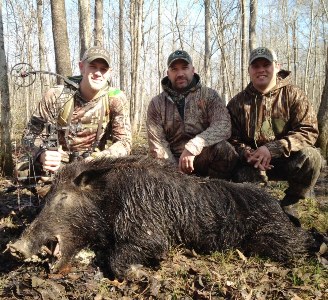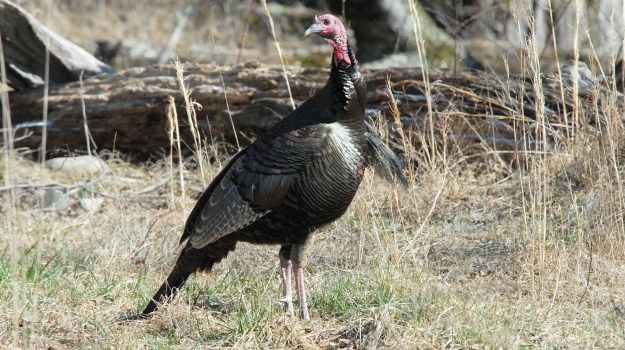
An Intelligent Creature Causing a Widespread Problem
There are many surprises when it comes to the wild hog that both baffle the biologist and cause aggravation to the land owner.
There are many headlines in regards to the quickly increasing numbers of wild hog in the United States; and although forty states claim the species, the highest numbers exist in the state of Texas (followed by California and Florida.) You would think that with such high numbers we would speaking about a creature that’s native to the U.S.; however, that is not the case at all.
There are actually three types of wild hogs found in the U.S. - feral hogs, Eurasian wild boar, and hybrids that have been created from the cross-breeding of the two. Their extensive history actually began around the Miocene era (predating the Ice Age). After that recorded time, the swine kingdom basically disappeared, not seen again until the New World was discovered. It was the early explorers, such as Cortes, who actually brought domesticated swine with them on their journeys, effectively introducing them into America.
This once manageable species has certainly made a name for themselves, especially in the Lone Star State, which currently accounts for half of the approximately four million wild hogs that roam the landscape.
Attempting to keep the numbers down is almost impossible, seeing as that wild hogs can live almost anywhere. Highly adaptable, the creature has almost no barriers when it comes to climate or habitat, and can even live over a day’s journey away from the nearest supply of water. When it comes to food, the wild hog is also an easy-to-please diner. Although they are omnivores when they get the opportunity, they exist manly on plant matter, as well as worms, insects and insect larvae.
The damage that wild hogs have created to the agricultural world is estimated to be over fifty million in reparations, not to mention the seven to ten million that land owners and developers have paid to do their best at controlling the species.
But, really, the numbers are no surprise when you look at the life expectancy of the wild hog. Being six to eight years, with a sow able to breed at the age of only seven or eight months and the average litter size being four to six, one sow can be responsible for birthing almost one thousand in just five years.
 Control is made even more difficult by the fact that, according to studies, wild hogs show a very high intelligence rate; combined with their acute sense of smell, they become almost impossible to stop. Hog trapping, as many in Texas already know, involves a great deal of patience. Seeing as that hogs can smell even better than deer, the human scent that lingers for days when a trap is placed warns them not to go near it. And unlike most wildlife that’s dying for a little dinner, the wild hog will not fall for bait, always leaving food behind that’s placed in the trap.
Control is made even more difficult by the fact that, according to studies, wild hogs show a very high intelligence rate; combined with their acute sense of smell, they become almost impossible to stop. Hog trapping, as many in Texas already know, involves a great deal of patience. Seeing as that hogs can smell even better than deer, the human scent that lingers for days when a trap is placed warns them not to go near it. And unlike most wildlife that’s dying for a little dinner, the wild hog will not fall for bait, always leaving food behind that’s placed in the trap.
Along with the wild hogs’ sense of smell comes acute hearing, as well as eyesight that proves a hog can detect a human figure over 100 yards away. With the wild boar, the facts become even more difficult. This type of swine comes with a shield, a suit of armor that becomes harder and thicker as they age. Protecting the boar during battles, this particular species can vary from 200-700 pounds making it a very formidable creature.
Hunters, land owners, developers - all industries do receive a bit of help where the wild hog is concerned, and that is the ever-diligent coyote. As hog populations increase, so do the coyote populations. Not to mention owls, bobcats, the mountain lion and the black bear, are also ready, willing and able to have a pork dinner at any time.
But even with all these predators, the wild hog seems to be winning. When it comes to the costly damage they wreak, the wild hog has become a true thorn in peoples’ sides. From the decline of quail populations to destruction of wild turkey nests, plant species and irrevocable damage to entire ecological systems, this species is definitely on the Most Wanted list.
The hunter is getting more and more involved with this overrun, with wild hog hunting running neck-and-neck now with the whitetail deer in popularity. As more research is found about this obviously highly-intelligent creature, it will be interesting to see if other solutions can be found.




























